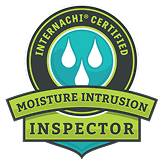- Phone : (941) 646-9982
- Babcock Ranch, Fort Myers, Cape Coral, Lehigh Acres, Alva, Florida
 Skip to content
Skip to content

Moisture intrusion is one of those deceptively simple issues that can quietly wreak havoc on both a building’s integrity and its occupants’ well-being.


In the northern U.S., moisture issues are caused by high indoor humidity and cold outdoor temperatures in winter. In the southern U.S., especially the Southeast, high outdoor humidity and cool indoor temperatures in summer create problems.

A roof leak may lead to the growth of visible mold colonies in the attic that can grow unnoticed. Roof penetrations increase the likelihood of water leaks due to failed gaskets, sealants and flashing.

Moisture intrusion in bathrooms often starts unnoticed due to hidden plumbing issues, poor ventilation, or deteriorated fixtures. A non-working exhaust fan, leaky sinks, cracked tiles, and damaged caulking can all contribute to long-term water damage

Utility areas should be clean, dry, and free of rust or dust. The water heater and softener tank should be well-maintained, and all wall penetrations for ducts, fuel lines, or wiring must be properly sealed. Ensure HVAC filters, vents, and drainage systems are functioning

In the attic, check for stains or discoloration around chimneys, vents, and skylights, as these are common moisture entry points. Inspect insulation for thin or uneven areas, and look for rust or corrosion near recessed lighting, which may indicate moisture issues or electrical

Building codes usually require foundation walls to be damp-proofed from the footing to the finished grade. This can be done using a bituminous coating, acrylic-modified cement, surface-bonding cement, or other approved waterproofing materials.
T McKee Home Inspections, LLC provides reliable and detailed inspections for homebuyers, sellers, and real estate professionals in the Fort Myers area.
© 2025 All Rights Reserved By T. Mckee Home Inspections, LLC
